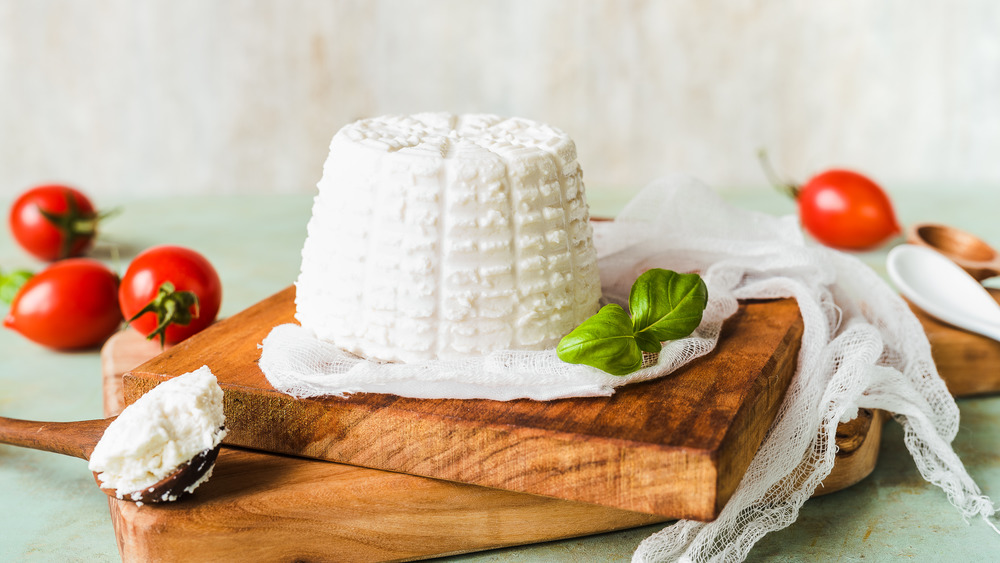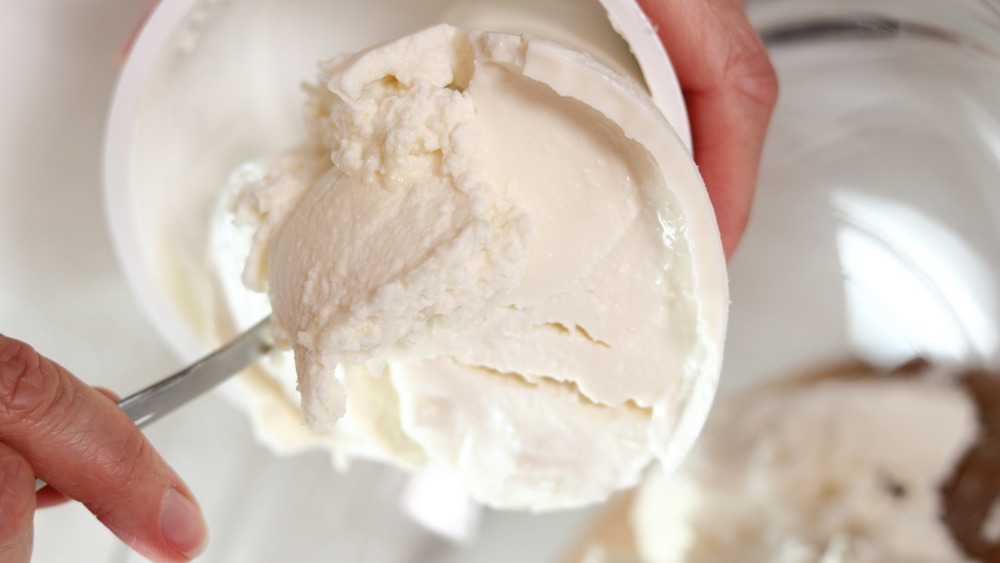Read This Before Freezing Ricotta Cheese
Fresh ricotta is so smooth and creamy that it makes the perfect addition to tons of recipes that call for fresh cheese. However, if you are someone who doesn't use it often or enjoy it on its own (think: warm ricotta with honey and berries, yum), then you might be left with a lot of ricotta after using a few tablespoons to top a dish. Fortunately, you can freeze ricotta cheese, but you'll be more limited in what you can use it in after it has been frozen. There are plenty of dishes you can still make with frozen ricotta, though.
Once ricotta has been frozen, the water in the cheese tends to freeze, which further separates the cheese. That means when the ricotta thaws and the thawed water is poured off with some of the whey, you'll be left with cheese that is drier and more crumbly than when you initially froze it. For this reason, you'll want to steer clear of using it in any recipes that call for fresh ricotta (via All Recipes). Frozen ricotta is great, however, for cooked dishes like lemon ricotta pancakes (via Food Network). Lasagna is another popular dish that you can use frozen ricotta in too (via The Wholesome Dish).
Freeze and thaw ricotta cheese this way
To successfully freeze ricotta, you can just stick the original container in the freezer if it is unopened. However, opened containers require a little more effort. Give the ricotta a stir before removing the cheese from the container and pressing it with paper towels to remove any excess water that you can. Next, wrap the ricotta in cling wrap before placing it in a freezer-safe container. Mark the date and freeze for up to two months.
When the time comes to thaw your ricotta cheese, place the container in the fridge for around five to six hours, but no more than eight. If you need it to thaw more quickly, you can place the container in a bowl of water in the fridge. Once the ricotta has thawed, use it within two days (via Robust Kitchen). Keep in mind that you should never thaw ricotta at room temperature because bacteria can grow more easily that way.

